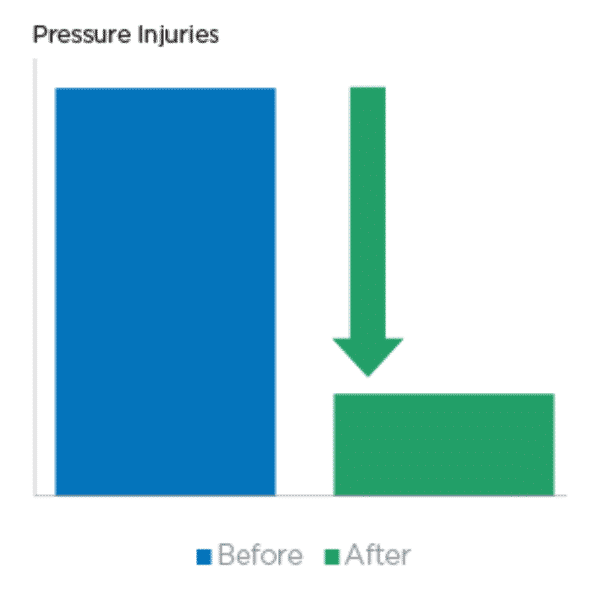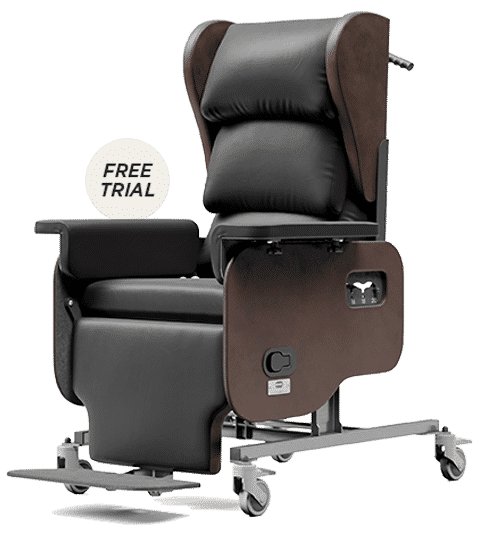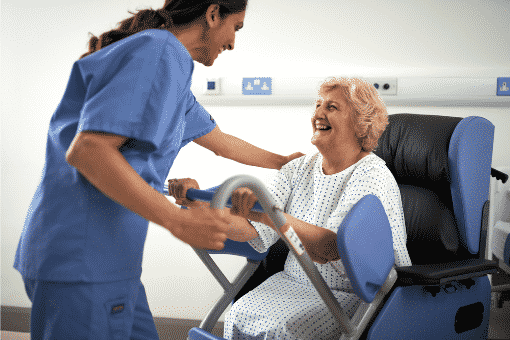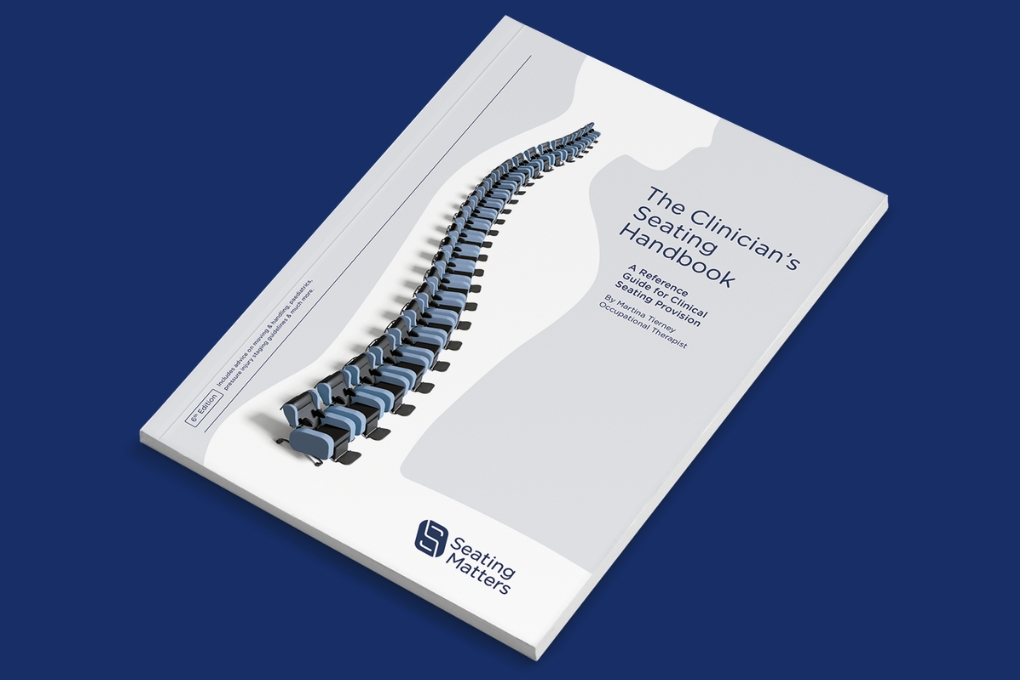Clinical Benefits
Pressure Injury Prevention
Seating Matters chairs have been clinically designed and proven to reduce the risk of pressure injuries.
Clinical trials demonstrate a 75% decrease in pressure injury incidence in clients who were using a Seating Matters chair. No new pressure injuries or redness occurred amongst the participants in these trials.
Chair Features for Pressure Injury Prevention
Pressure injuries, also known as pressure ulcers or bedsores, are a significant health concern, especially among individuals with limited mobility. These injuries occur when prolonged pressure on the skin reduces blood flow, leading to tissue damage.
They most frequently impact the elderly population and those with long-term disabilities, who tend to spend long periods of time sitting.
It is estimated that pressure injuries affect 12.9% of acute-care hospital patients in Australia, yet 95% of pressure injuries are thought to be avoidable.
A focus on pressure injury prevention and pressure injury management is critical.
Seating Matters chairs have been clinically designed to reduce the risk of pressure injuries, improving comfort and reducing cost of care. This is achieved through the incorporation of key features for pressure injury prevention, including:
- Up to 45-degree tilt in space
- Adjustable back angle recline
- Elevating leg rest
- Adjustable chair dimensions incl. arm rests and leg rests
- Pressure management cushions crafted from Visco memory foam, which is coated in Dartex, an anti-shear, multi-stretch material

Pressure Injuries in Australia
The total cost of pressure injuries in Australian public hospitals was $9.11 billion in 2020, of which treatment cost was $3.59 billion.1
Reducing hospital acquired pressure injuries by 50% would result in saving hospitals $1.10 billion in treatment costs.1
The overall prevalence of pressure injuries in acute-care hospitals in Australia and New Zealand is 12.9% and the hospital-acquired injury prevalence is 7.9%.2
Pressure Injury Prevention Clinical Trials
Seating Matters chairs are constantly being reviewed and updated, with feedback from healthcare workers, patients and clinical trials.
These clinical studies demonstrate a 75% reduction in pressure injuries amongst patients who used a Seating Matters chair in a hospital setting. A further study conducted in residential and nursing homes showed no development of red areas or pressure ulcers in participants using Seating Matters specialist seating, and an overall reduction in existing pressure ulcers.

Four Principles of Clinical Seating & Pressure Injury Prevention
Recent research, conducted in partnership between Ulster University and Seating Matters, has highlighted four key principles that ensure optimum pressure management and comfort for the patient.
Reduce the pressure exerted at any one point by increasing an individual’s surface area contact with their chair. This can be achieved by ensuring and maintaining correct seat dimensions, including seat height, seat depth, seat width, foot plate height and foot plate angle.
Correct seating dimensions and adequate head, lateral and leg supports can help the elderly patient maintain a midline posture and manage the distribution of pressure thoughout their body.
Guidelines recommend that seated individuals are repositioned every 2 hours. This can increase blood flow and the amount of oxygen reaching the skin. Research shows that a 45-degree tilt can maximise the potential for significant blood flow increase and pressure reduction.
All Seating Matters chairs are crafted from Visco memory foam, coated in Dartex. This material allows elderly patients to comfortably sink into the foam, preventing the development of pressure injuries.
A medium to high risk memory foam cushion is also standard on all Seating Matters chairs. The cushion is removable to accommodate alternate cushions if required.
FAQs: Pressure Injury Prevention
Pressure injuries, also called pressure ulcers or bedsores, are areas of skin and underlying tissue that are damaged due to prolonged pressure. This pressure reduces blood flow to the affected area, causing the skin and tissue to break down, which can lead to open wounds and, in severe cases, deeper tissue damage. They most commonly occur over bony areas of the body such as the hips, heels, elbows, and tailbone, where skin is thin and less cushioned by muscle or fat.
These injuries can range in severity from mild reddening of the skin to deep ulcers that reach muscles, tendons, and bones. People who are immobile, such as those confined to beds or wheelchairs, are at the highest risk, and they often develop in elderly individuals or those with chronic illnesses.
Early identification and effective pressure injury prevention strategies are essential to manage and reduce the risk of these wounds.
Pressure injury prevention is crucial because these injuries can lead to serious health complications, including infections, chronic pain, and prolonged hospital stays. Once a pressure injury develops, it can be difficult to heal, especially in vulnerable populations like the elderly or those with mobility issues.
By implementing pressure injury prevention measures, such as regular repositioning and using pressure relieving devices, healthcare providers can significantly reduce the occurrence of these injuries. Prevention not only protects patients from unnecessary suffering but also reduces healthcare costs and the burden on medical resources.
Preventing pressure injuries involves a combination of proactive measures, including frequent repositioning, skin care, and use of a high-quality pressure management chair.
Key features include a tilt in space mechanism to redistribute weight across the body, adjustable recline to enable frequent position changes, and pressure-relieving memory foam cushions to reduce pressure on high-risk areas.
Seating Matters chairs have been specifically designed for pressure injury prevention and pressure injury management.
A pressure care cushion is a specialised cushion designed to reduce the risk of pressure injuries by distributing the user’s body weight more evenly and minimising pressure on vulnerable areas.
The Seating Matters Envelo range of pressure care cushions has been clinically designed to offer additional support and comfort alongside the Seating Matters therapeutic seating range. All Envelo cushions incorporate a layer of high performance memory foam, and are coated in Dartex®, a multi-stretch, breathable, waterproof material which can be wiped clean and protects against bacteria.
References
1. ‘Pressure injuries in Australian public hospitals: A cost of illness study’ (International Journal of Nursing Studies, 2022)
https://www.sciencedirect.com/science/article/pii/S0020748922000207
2. ‘Systematic review of pressure injury prevalence in Australian and New Zealand hospitals’ (Collegian, 2021)
Systematic review of pressure injury prevalence in Australian and New Zealand hospitals – ScienceDirect




